6266 Miles 297cc 1 cylinder Manual1 Door Coupe
- Condition: Used
- Make: BMW
- Model: Isetta 300
- Type: 1 Door Coupe
- Trim: --
- Year: 1957
- Mileage: 6,266
- VIN: 501501
- Color: Tan
- Engine size: 297cc 1 cylinder
- Power options: --
- Fuel: Gasoline
- Transmission: Manual
- Drive type: --
- Interior color: Tan
- Options: --
- Vehicle Title: Clear
- Location: Torrance, California, United States
Description
West Coast Classics are proud to present an exceptionally rare barn-fresh (garage really!) find of an all original southern California 1957 BMW Isetta 300 Coupe wwith it's original 297cc 13HP 1 cylinder engine with 6,266 original miles, boasting its original California 'Yellow License Plates' with original selling dealer, 'Truschel Brothers' of Culver City, CA license plate frames and with only one southern California family owner since new and still titled in its original owner's name with it's original California 'Pink... Slip' from 10/4/1957!This is a rare all stock and all original example which has not been registered, driven or moved since 1959 when at 2 years old it was parked by it's original and only owner in their garage in southern Califiornia and not moved until it was to be sold by the daughters of the estate to us last month! We have a video of the car sitting in the garage prior to our towing it to our facility on our website. The car is all original with it's original 12V 'Varta' battery, original 'Al Davis' AM radio, original spare wheel and tools. Please note that the engine turns by hand but the car will be sold as is, just as we found it, without so much as a wash in order to preserve its rare integrity for it's next owner. The car has been sitting covered in it's original owner's garage since 1959.The body has no rust and the floor boards and trunk area are also completely original, solid and rust free with only the original muffler showing any signs of rust. Please note that the car does have some parking dents in it's bumpers and some minor scratches as can be seen in the pictures, from its many years of being maneuvered around by its family owners, in a packed garage whilst in storage over the years. The car has it's completely original interior which has been remarkably well preserved.The egg-shaped Isetta caused a sensation when it was introduced to the motoring press in Turin, Italy in November 1953 as it was unlike anything seen before and is today generally considered to be the best microcar ever, certainly its the archetypal 'bubble car' and is today recognized and loved worldwide by both classic car collectors and microcar enthusiasts. Its totally unconventional design caused a furor at its introduction in Turin and from this influential debut grew a number of licensed branches worldwide with the most well know being obviously BMW in Germany where it became the obvious go to car of the working man and by November 1955, ten thousand had been built.Small at only 7.5 ft long by 4.5 ft wide and egg-shaped, with bubble-type windows, it was seen by BMW as filling a gap between their motorcycle range and the luxury 501 models and the entire front end of the car hinged outwards to allow entry. In the event of a crash, the driver and passenger were to exit through the canvas sunroof. The steering wheel and instrument panel swung out with the single door, as this made access to the single bench seat simpler. The seat provided reasonable comfort for two occupants and a small child. Behind the seat was a large parcel shelf with a spare wheel located below. A heater was optional, and ventilation was provided by opening the fabric sunroof.Initially power came from a 236 cc (14.4 cu in), 7.1 kW (9.5 hp) 2 stroke motorcycle engine and a manual gearbox provided four forward speeds and reverse. A chain drive connected the gearbox to a solid rear axle with a pair of closely spaced 25 cm (10 in) rear wheels. The first prototypes had one wheel at the rear, but having a single rear wheel made the car prone to roll-overs so the rear wheel layout was changed to two wheels set 48 cm (19 in) apart from each other. This narrow track eliminated the need for a differential. The Isetta took over 30 seconds to reach 50 km/h (31 mph) from rest. Top speed was only about 75 km/h (47 mph). The fuel tank held only 13 litres (3.4 US gal; 2.9 imp gal).In 1956, the government of the Federal Republic of Germany changed the regulations for motor vehicles. Class IV licences issued from that time onward could only be used to operate small motorcycles and could no longer be used to operate motor vehicles with a capacity of less than 250 cc. At the same time, the maximum capacity allowed for the Isetta's tax category was 300 cc. This change in regulations encouraged BMW to revise their Isetta micro cars. In February 1956 a 300cc engine was introduced. The engineers enlarged the single cylinder engine to a 72 mm (2.8 in) bore and 73 mm (2.9 in) stroke which gave a displacement of exactly 298 cc; at the same time, they raised the compression ratio from 6.8 to 7.0:1. As a result, the engine power output rose to 10 kW (13 hp) at 5200 rpm, and the torque rose to 18.4 N⋅m (13.6 ft⋅lbf) at 4600 rpm. The maximum speed remained at 85 km/h (53 mph), yet there was a marked increase in flexibility, chiefly noticeable on gradients and in October 1956, the Isetta Moto Coupe DeLuxe (sliding-window Isetta) was introduced. The bubble windows were replaced by longer, sliding side windows.This is a rare opportunity to own a very rare and internationally desirable 1957 legendary BMW Isetta 300 Coupe preserved in a southern California garage since 1959 with only 6,266 original miles and only one southern California owner since new!
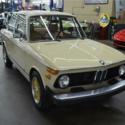 1976 BMW 2002 Coupe 51165 Miles Sahara Coupe 2.0 Liter 4-cylinder Automatic
1976 BMW 2002 Coupe 51165 Miles Sahara Coupe 2.0 Liter 4-cylinder Automatic
Mileage: 51165
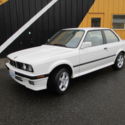 1989 E30 325iX 5 speed 2 Door Coupe AWD 2.5 Liter 6 cylinder - 5 speed manual
1989 E30 325iX 5 speed 2 Door Coupe AWD 2.5 Liter 6 cylinder - 5 speed manual
Mileage: 260,000
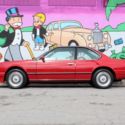 1988 BMW M6 E24 Sharknose 23,600 Miles Zinnoberot Red Coupe S38B35 6-Cylinder Ma
1988 BMW M6 E24 Sharknose 23,600 Miles Zinnoberot Red Coupe S38B35 6-Cylinder Ma
Mileage: 23600
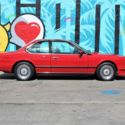 1988 BMW M6 E24 Sharknose 23,600 Miles Zinnoberot Red Coupe S38B35 6-Cylinder M
1988 BMW M6 E24 Sharknose 23,600 Miles Zinnoberot Red Coupe S38B35 6-Cylinder M
Mileage: 23,600
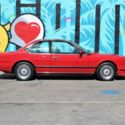 1988 BMW M6 E24 Sharknose 23,600 Miles Zinnoberot Red Coupe S38B35 6-Cylinder
1988 BMW M6 E24 Sharknose 23,600 Miles Zinnoberot Red Coupe S38B35 6-Cylinder
Mileage: 23,600
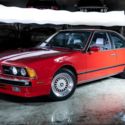 1988 BMW M6 E24 Sharknose 24,000 Miles Zinnoberot Red Coupe S38B35 6-Cylinder Ma
1988 BMW M6 E24 Sharknose 24,000 Miles Zinnoberot Red Coupe S38B35 6-Cylinder Ma
Mileage: 24000
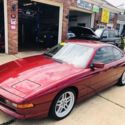 1993 BMW 850CI 12 CYLINDER 5.0L AUTOMATIC 70K MILES RED/TAN RWD COUPE RIMS RECON
1993 BMW 850CI 12 CYLINDER 5.0L AUTOMATIC 70K MILES RED/TAN RWD COUPE RIMS RECON
Mileage: 70,664
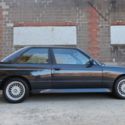 1988 BMW 3 Series M3 111430 Miles BLACK COUPE 4 CYLINDER Manual
1988 BMW 3 Series M3 111430 Miles BLACK COUPE 4 CYLINDER Manual
Mileage: 111,430
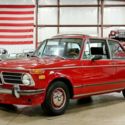 1972 BMW 2002 9060 Miles Granada Red Coupe 2.0L 4-Cylinder 4-Speed Manual
1972 BMW 2002 9060 Miles Granada Red Coupe 2.0L 4-Cylinder 4-Speed Manual
Mileage: 9060
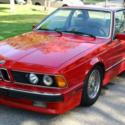 1989 BMW 6 Series 635CSi 73154 Miles Red COUPE Straight 6 Cylinder Engine 3.5L/2
1989 BMW 6 Series 635CSi 73154 Miles Red COUPE Straight 6 Cylinder Engine 3.5L/2
Mileage: 73154












